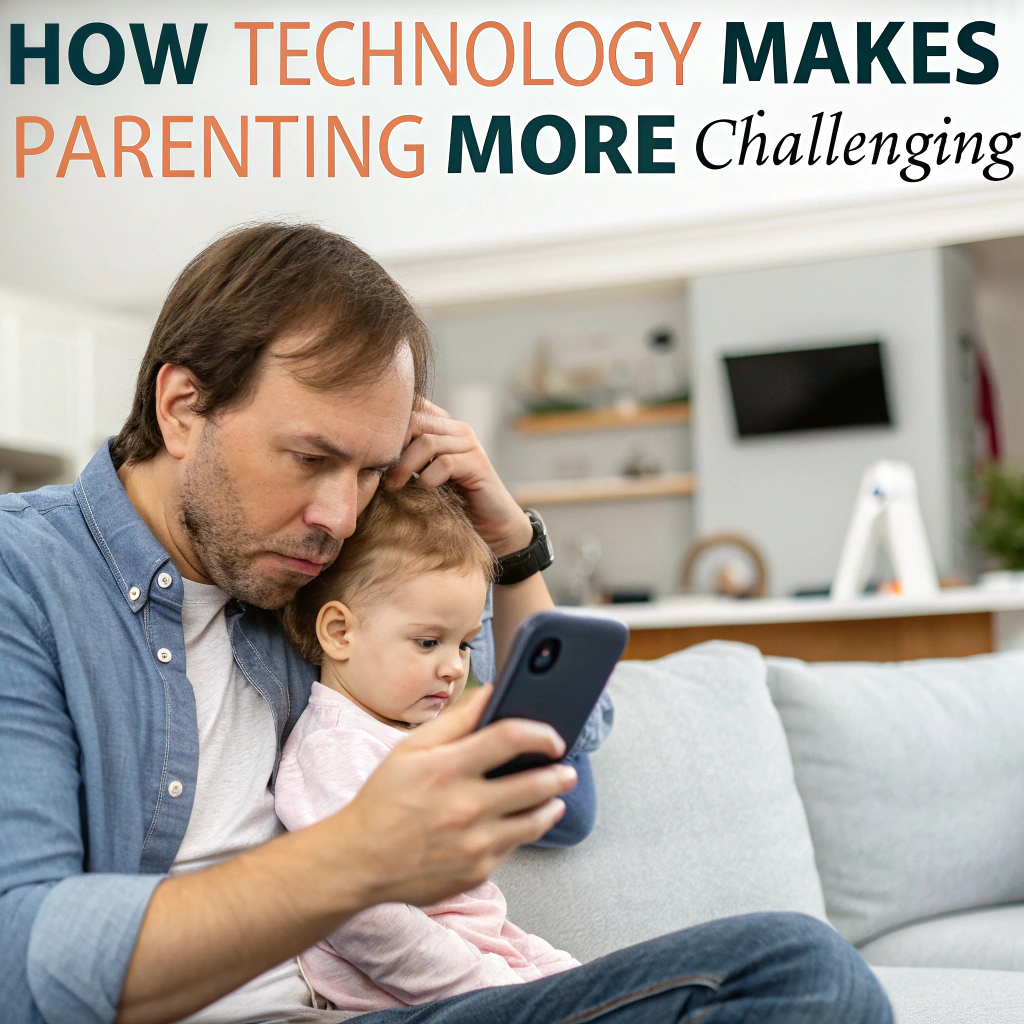Parenting in the digital age comes with unique challenges. How technology makes parenting more challenging is evident in daily life, as screens compete for attention, disrupt communication, and affect child development. While technology offers convenience, it also creates distractions, making it harder for parents to engage fully with their children. Balancing digital use and quality time has become a growing concern for modern families.
1. Understanding the Impact of Screens, Social Media, and Digital Distractions on Modern Parenting
Technology has transformed every aspect of life, including parenting. While digital advancements have provided numerous conveniences, they have also introduced new challenges. From smartphones and tablets to social media and online gaming, technology has become an integral part of childhood, often making parenting more difficult. Many parents struggle to balance screen time, monitor online activities, and maintain meaningful interactions with their children. Moreover, the rapid evolution of digital trends makes it challenging for parents to stay informed and protect their children from online dangers.
2. Struggles of Modern Parenthood: How Technology Makes Parenting More Challenging
One of the biggest struggles parents face today is the overuse of digital devices. Children are spending more time on screens than ever before, which can lead to reduced physical activity, sleep disturbances, and decreased attention spans. Studies indicate that excessive screen time can negatively impact cognitive development and social skills in young children. Social media adds another layer of complexity, exposing kids to cyberbullying, unrealistic expectations, and privacy risks. Furthermore, technology has made it easier for children to access inappropriate content, increasing the need for constant supervision. Parents must also navigate the challenge of setting firm yet fair rules around technology use, ensuring that their children develop healthy digital habits.
3. Balancing Screens and Family Time:

Finding the right balance between technology use and quality family time is crucial. Parents often find themselves competing with devices for their children’s attention, making it difficult to foster strong relationships. Setting screen time limits, encouraging outdoor activities, and fostering open communication about technology use can help mitigate its negative effects. Additionally, leading by example—such as putting away phones during meals, engaging in tech-free activities, and prioritizing face-to-face interactions—can reinforce healthier habits for children. Experts also recommend establishing ‘digital detox’ periods where the entire family disconnects from screens and engages in meaningful activities together, such as reading, cooking, or playing board games.
4. The Hidden Costs of Convenience: How Technology Makes Parenting More Challenging ?
While technology offers solutions like educational apps, online parenting resources, and digital monitoring tools, it also has drawbacks. Over-reliance on technology can reduce face-to-face interactions, weaken emotional bonds, and create dependency on digital entertainment. Many parents unknowingly contribute to this issue by frequently using their own devices in front of their children, leading to reduced quality time and engagement. Additionally, increased screen time can lead to behavioral changes, including irritability, difficulty focusing, and a reliance on instant gratification. Parents must strike a balance between leveraging technology for educational purposes and ensuring that it does not replace real-life experiences and relationships. Implementing clear technology guidelines within the household can help create a healthier digital environment for children.
Conclusion
Technology is a double-edged sword when it comes to parenting. While it provides useful tools and resources, it also brings challenges that require careful navigation. By being mindful of screen time, fostering open discussions, and setting clear boundaries, parents can mitigate the negative effects of technology and create a more balanced and fulfilling family life. Ultimately, the goal is to use technology as a tool for learning and connection rather than allowing it to dictate family dynamics.

